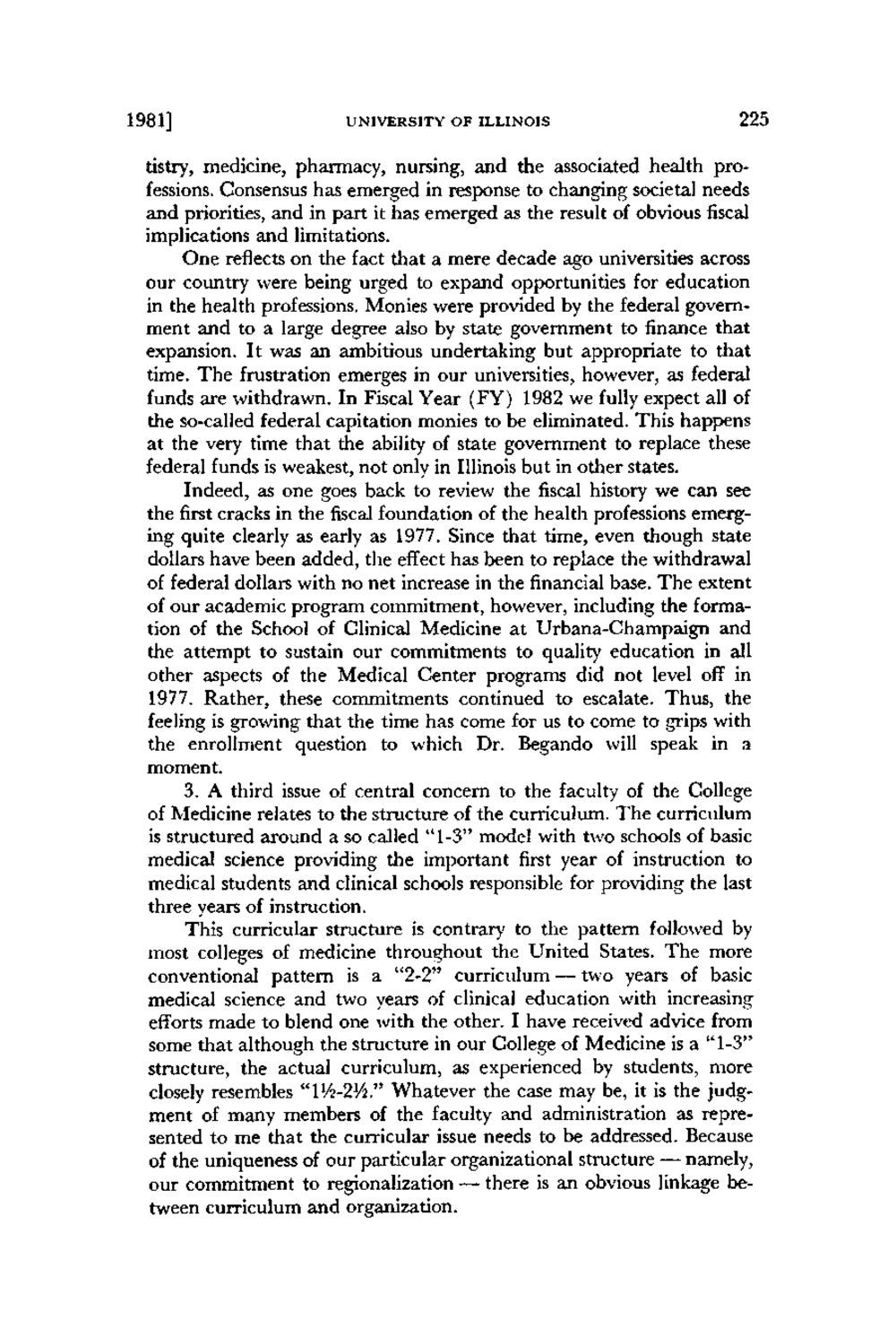| |
| |
Caption: Board of Trustees Minutes - 1982
This is a reduced-resolution page image for fast online browsing.

EXTRACTED TEXT FROM PAGE:
1981] UNIVERSITY OF ILLINOIS 225 tistry, medicine, pharmacy, nursing, and the associated health professions. Consensus has emerged in response to changing societal needs and priorities, and in part it has emerged as the result of obvious fiscal implications and limitations. One reflects on the fact that a mere decade ago universities across our country were being urged to expand opportunities for education in the health professions. Monies were provided by the federal government and to a large degree also by state government to finance that expansion. It was an ambitious undertaking but appropriate to that time. The frustration emerges in our universities, however, as federal funds are withdrawn. In Fiscal Year (FY) 1982 we fully expect all of the so-called federal capitation monies to be eliminated. This happens at the very time that the ability of state government to replace these federal funds is weakest, not only in Illinois but in other states. Indeed, as one goes back to review the fiscal history we can see the first cracks in the fiscal foundation of the health professions emerging quite clearly as early as 1977. Since that time, even though state dollars have been added, the effect has been to replace the withdrawal of federal dollars with no net increase in the financial base. T h e extent of our academic program commitment, however, including the formation of the School of Clinical Medicine at Urbana-Champaign and the attempt to sustain our commitments to quality education in all other aspects of the Medical Center programs did not level off in 1977. Rather, these commitments continued to escalate. Thus, the feeling is growing that the time has come for us to come to grips with the enrollment question to which Dr. Begando will speak in a moment. 3. A third issue of central concern to the faculty of the College of Medicine relates to the structure of the curriculum. T h e curriculum is structured around a so called " 1 - 3 " model with two schools of basic medical science providing the important first year of instruction to medical students and clinical schools responsible for providing the last three years of instruction. This curricular structure is contrary to the pattern followed by most colleges of medicine throughout the United States. The more conventional pattern is a "2-2" curriculum — two years of basic medical science and two years of clinical education with increasing efforts made to blend one with the other. I have received advice from some that although the structure in our College of Medicine is a " 1 - 3 " structure, the actual curriculum, as experienced by students, more closely resembles "1V£-2V4." Whatever the case may be, it is the judgment of many members of the faculty and administration as represented to me that the curricular issue needs to be addressed. Because of the uniqueness of our particular organizational structure — namely, our commitment to regionalization — there is an obvious linkage between curriculum and organization.
| |